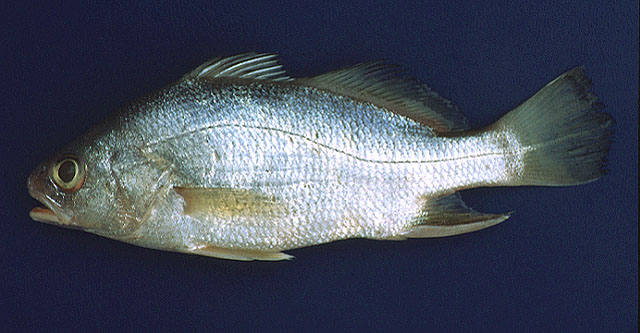| Sciaenidae (Drums or croakers) |
| 35 cm TL (male/unsexed) |
|
demersal; brackish; marine; depth range 16 - 40 m |
| Western Atlantic: Caribbean Sea southward to Brazil. |
|
Dorsal spines (total): 11-11; Dorsal soft rays (total): 21-26; Anal spines: 2-2; Anal soft rays: 7-9. Colour greyish above, silvery below. Faint dark streaks on sides, oblique above, longitudinal below lateral line. Dorsal and caudal fins greyish with dark margin, anterior part of anal fin speckled. Mouth subterminal and oblique. Chin without barbel but with 5 pores. Preopercle serrated with few strong pines at angle. Second anal-fin spine very strong, as long as first soft ray. Gas bladder with 2 chambers, the anterior one yoke-shaped without appendages, the posterior one simple, carrot-shaped. Lapillus (small earstone) enlarged, more than half of sagitta (large earstone) (Ref 51721). |
| Found in coastal waters, over muddy and sandy bottoms. Feeds on fishes and crustaceans. Oviparous (Ref. 205). Important food fish. |
|
Least Concern (LC); Date assessed: 04 February 2019 Ref. (130435)
|
| harmless |
Source and more info: www.fishbase.org. For personal, classroom, and other internal use only. Not for publication.

